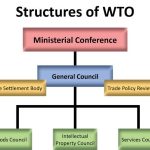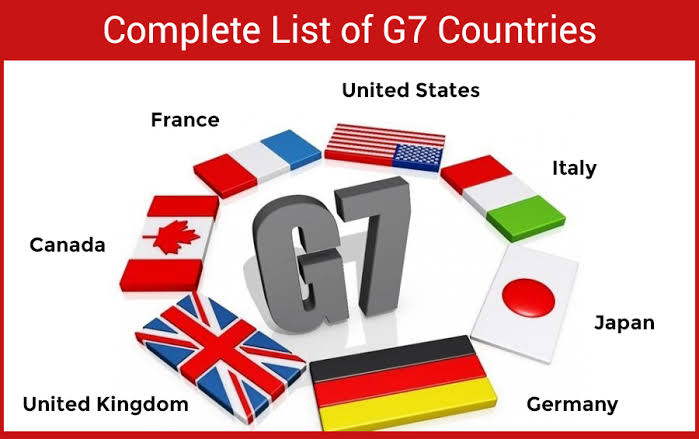
The Group of Seven (G-7) is an informal group of seven industrialised democracies: France, Germany, Italy, the United Kingdom, Japan, the United States, and Canada. They meet once a year to talk about things they all care about, like global economic governance, international security, and energy policy. Its members are the world’s largest IMF advanced economies and wealthiest liberal democracies.
In 1975, the French President asked the leaders of West Germany, the United States, Great Britain, Japan, and Italy to meet in Rambouillet, France, to talk more about the global oil problem.
• The Group of Six was created in 1975 by France, West Germany, Italy, Japan, the United Kingdom, and the United States to help industrialised governments deal with urgent economic issues.
In 1976, Canada was also asked to join the group. The first meeting of all G-7 countries was held in 1976 in Puerto Rico, which was hosted by the United States.
• Since 1981, the European Union has been a full member of the G-7 as a “non enumerated” member.
It is made up of the heads of the European Council, which is made up of the leaders of the EU member states, and the European Commission, which is the EU’s governing body. The G-7 was called the G-8 for a few years after Russia joined in 1997. After the Soviet Union fell apart in 1991, adding USSR to the G-7 was meant to show that East and West could work together.
After Russia was kicked out of the group in 2014 for taking over the Crimea area of Ukraine, the group went back to being called the G-7. There are no formal requirements for joining, but all of the members are highly developed democracies.
Table of Contents
How does the Summit Participation take place?
• Summits happen once a year and are hosted by a different member of the group each time. The country that is hosting the G7 also has the presidency and sets the plan for the year.
• The country that is hosting the meeting sends special invitations to world leaders to attend the summit. Summits have been held by China, India, Mexico, and Brazil, among other countries.
Leaders of important foreign groups like the European Union, the IMF, the World Bank, and the UN are also invited.
Sherpas
• The “sherpas,” who are usually personal representatives or members of foreign staff like ambassadors, do the prep work for the Summit. This includes figuring out what will be talked about and setting up follow-up meetings.
Difference Between G-7 and G-20?
• The G-20 was started in 1999, after the Asian financial crisis of 1997–1998. At first, it was just a meeting of finance ministers and central bank directors.
In reaction to the 2008 financial crisis, however, the G-20 was raised to the level of heads of state at its first meeting in Washington, D.C.
• The G-7 is mostly about politics, but the G-20 is a larger group that talks about the world economy.
It’s also called the “Summit on Financial Markets and the World Economy,” and G20 members make up more than 80% of the world’s GDP.
o Aside from the G-7, the G-20 is made up of Argentina, Australia, Brazil, China, India, Indonesia, Mexico, Russia, Saudi Arabia, South Africa, South Korea, and Turkey.
What Happened to the G-7?
• A subtle shift in power: In 2008, the G-8 talked about food inflation and a lot of other important world problems, but they completely missed the 2008 global financial crisis.
At their meeting, the G20 stepped in and got to the root of the problem. They asked the U.S. to put more rules on its financial markets.
After that, it was clear that the G-20 developing market countries, which had avoided the crisis for the most part, had to be involved in any global effort.
The G-20 Summit took the place of the G-8 as the most important gathering of world leaders.
So, it meant that the old world order was over and a new one was starting.
• The forum’s small and mostly similar membership makes it easier to make decisions as a group, but critics say it often doesn’t follow through and leaves out important new powers.
The G-7 is a loose group that doesn’t make any binding decisions. This means that the leaders’ statements at the end of the meeting don’t have to be followed.
• The growth of the G-20, which represents the hopes of emerging economies like India, China, Brazil, etc., has put pressure on groups like the G-7, which are controlled by the west.
Relationship between G-7 and FATF:
• In answer to growing concerns about money laundering, the G-7 met in Paris in 1989 and set up the Financial Action Task Force on Money Laundering (FATF).
In 2001, terrorism funding was added to its job description.
• The G-7 Heads of State or Government and the President of the European Commission set up the Task Force because they knew there was a danger to the banking system and financial institutions. The Task Force is made up of the G-7 member states, the European Commission, and eight other countries.
• The main goal of the FATF is to make sure that “financial systems and the wider economy are protected from the threats of money laundering, financing of terrorism, and proliferation,” which strengthens the integrity of the financial sector and helps keep people safe.
________________________________________
India and the G7
• The G7 French Presidency called India as a “Goodwill Partner” to the 2019 Biarritz Summit. India’s Prime Minister attended the Sessions on “Climate, Biodiversity, and Oceans” and “Digital Transformation.”
• In 2021, the Indian Prime Minister “virtually” went to the summit from India. There, he called for a coordinated global reaction to coronavirus disease (Covid-19) and future pandemics, using the slogan “One earth, one health” to make his case.
The prime minister also tried to get India and South Africa’s World Trade Organisation (WTO) plan for a waiver of patent protections for Covid-19 vaccines and technologies approved.
Also, the Indian Prime Minister said that India is a natural ally for the G7 countries when it comes to protecting shared values from dangers like authoritarianism, terrorism and violent extremism, disinformation, and economic coercion.
India also said that equality, freedom of thought, and freedom are important to its culture.
India also asked the G7 countries to keep their word to set aside $100 billion every year to help developing countries deal with the problems caused by climate change. This is something they haven’t done yet.
• At the 48th G7 Summit, the Indian Prime Minister asked the other G7 countries to take advantage of India’s growing market for clean energy solutions.
In 2022, Germany will be in charge of the G7.
o Argentina, India, Indonesia, Senegal, and South Africa have been asked to attend the G7 Summit by Germany.
Partnership for Global Infrastructure and Investment (PGII): The G7 stated that they would pool together $600 billion by 2027 to fund “game-changing” and “transparent” infrastructure projects in low-income and middle-income countries.
The Indian Prime Minister brought attention to the Global Initiative for LiFE (Lifestyle for Environment) effort.
• The goal of this effort is to get people to live in a way that helps the environment.
Stand on the Russia-Ukraine Crisis: The Russia-Ukraine crisis has sent energy prices to an all-time high. The Indian Prime Minister talked about the need for rich and poor countries to get the same amount of energy.
o About the war between Russia and Ukraine, the Prime Minister said again that fighting must stop right away and that discussion and diplomacy are the best ways to find a solution.
How the G-7 group is important to India:
• There has been a lot of tension between India and the European Union over things like data protection and changing the political situation in Jammu and Kashmir. India and the European Union will be able to talk to each other in a different place through the G-7 group.
• The three countries in this group are permanent members of the UN Security Council. This gives this group world political power, which India can use to its advantage.
If India joins, it can help its longtime partner, Russia, join as well.
• Through this group, India can spread ideas like making global institutions more democratic around the world.
• If trade between India and these countries grows, more jobs will be available to the people of India.

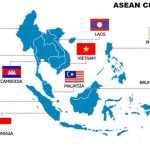


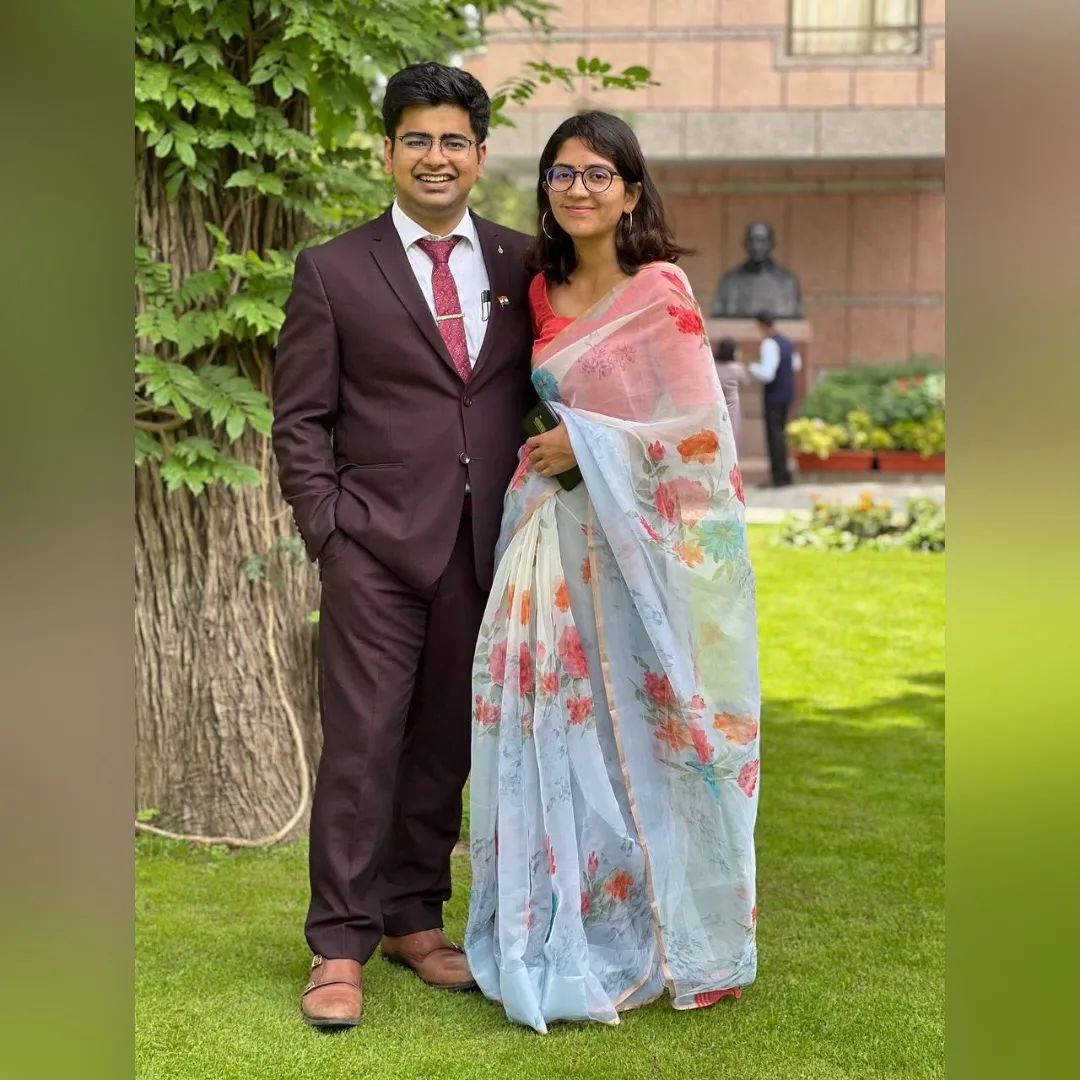

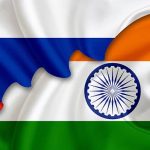






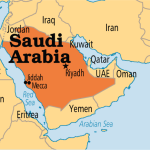
![UPSC CSE Topper Mains Answer [Part 2] images-2023-06-17T192027.770](https://iasbio.com/wp-content/uploads/2023/06/images-2023-06-17T192027.770-150x150.jpeg)
![UPSC CSE Topper Mains Answer [Part 1] images-2023-06-17T191749.185](https://iasbio.com/wp-content/uploads/2023/06/images-2023-06-17T191749.185-150x150.jpeg)
